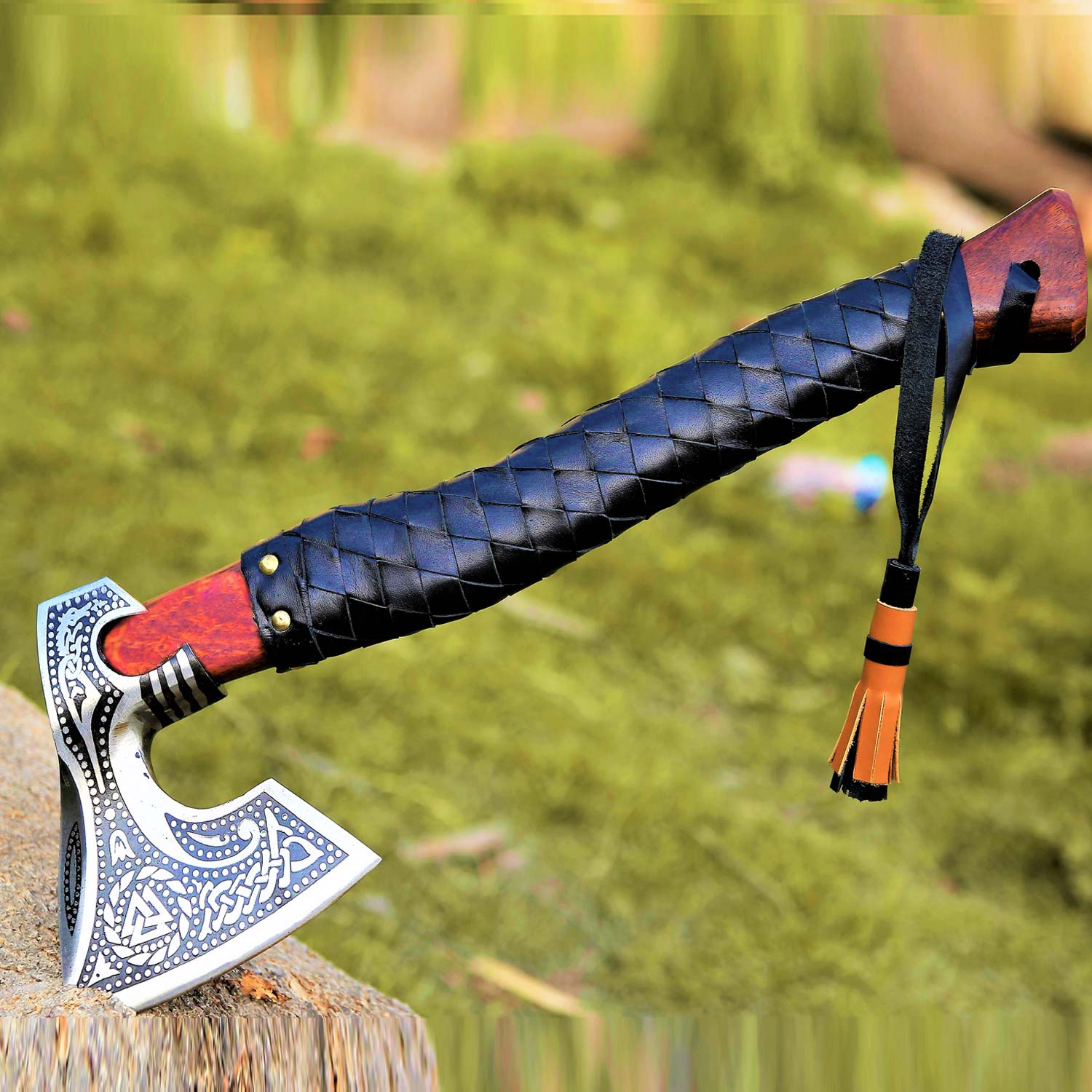
The Viking Age, which lasted from the late eighth century to the early eleventh, is renowned for its formidable warriors, seafaring expeditions, and rich cultural heritage. Among the various guns that defined this era, the double-bit Viking Axe stands out as a image of electricity, craftsmanship, and versatility. The records, design, methods, and practical programs of the double-bit Viking axe can be found in this book, providing enthusiasts with the knowledge necessary to comprehend this iconic weapon. The History of the Double-Bit Viking Axe
The double-bit axe, characterised with the aid of its two sharp edges, turned into a favored tool among Viking warriors and craftsmen. The double-bit design, in contrast to single-bit axes, which were primarily used for chopping wood, allowed for more versatility in combat and utility tasks. The twin edges enabled warriors to strike with precision and performance, making it an impressive weapon at the battlefield.
Historically, the double-bit axe became not best a weapon but also a image of status and ability. As a sign of their skill and individuality, the Vikings frequently engraved and designed intricate designs on their axes. The double-bit Axe became an integral part of Viking culture because it represented both the warrior spirit and everyday needs. Understanding the Design
The double-bit Viking axe typically has a long wood handle that provides leverage and control and is typically made of sturdy hardwoods like oak or ash. The Axe head is solid from excellent steel, with sharp edges that permit for flexible use. The layout of the Axe head can vary, with a few offering a much broader blade for cutting and others designed for extra precise strikes.
Key Components of the Double-Bit Viking Axe:
Axe Head: The coronary heart of the axe, wherein the two cutting edges are positioned. The shape and weight of the head can influence the axe’s performance in exclusive tasks.
Handle: The lengthy shaft that gives leverage. For stability and control during use, a well-made handle is essential. Grip: The place where the axe is held by the person. A comfortable grip is crucial for powerful managing and lowering fatigue.
Weight Distribution: The stability of the axe’s head and handle influences how comfortable it is to hold and how easily it can be swung. Techniques for Mastery
The double-bit Viking axe requires practice, perseverance, and knowledge of the best methods to master. Here are some vital hints for enthusiasts looking to hone their abilities:
1. Grip and Position Start via adopting a proper grip. Each arm should be holding the axe, with one hand near the handle’s lowest point and the other closer to the axe’s head. Your knees should be barely bent for balance, and your stance should be shoulder-width apart. This position allows for better manipulate and strength during swings.
2. Techniques for Swinging When swinging the axe, consciousness on using your complete frame instead of just your hands. Engage your middle and legs to generate power. Before moving on to faster, more powerful moves, begin with slow, controlled swings to improve muscle memory. Practice each horizontal and vertical swings to emerge as gifted in various cutting strategies.
Three. Target Training To improve accuracy, set up objectives inclusive of logs or wood planks. Practice striking the goal with each edges of the axe. This will assist you apprehend the dynamics of the axe and enhance your precision.
Four. Care and Maintenance A nicely-maintained axe is crucial for most fulfilling overall performance. Check the handle for signs of wear and regularly sharpen the rims to ensure easy cuts. Oil the wood handle to stop it from drying out and cracking, and store the axe in a dry place to keep it dry. Practical Applications
The double-bit Viking axe isn’t only a historical artifact; it has sensible packages these days. Here are some methods lovers can make use of this flexible tool:
1. Throwing an Axe Axe throwing has received recognition as a leisure hobby. Because the double-bit layout makes it possible to make throws that are evenly spaced, fans who want to play this thrilling game will want to play it. 2. Handicraft and woodworking The double-bit Axe may be used for various woodworking responsibilities, from felling bushes to shaping logs. Its dual edges provide versatility, permitting craftsmen to address one-of-a-kind initiatives quite simply.
3. Historical Reenactment
The double-bit Viking axe can enhance authenticity for those interested in historical reenactment. Understanding its use in fight and day by day existence can bring history to life in the course of events and demonstrations.
Conclusion
The double-bit Viking axe is more than just a weapon; it is also a demonstration of the creativity and skill of the Viking age. Fans can truly comprehend this iconic device by learning about its history, design, and methods. The double-bit Viking axe combines practicality and cultural significance in a novel way, making it ideal for axe throwing, woodworking, or historical reenactment. Embrace the spirit of the Vikings and embark on.